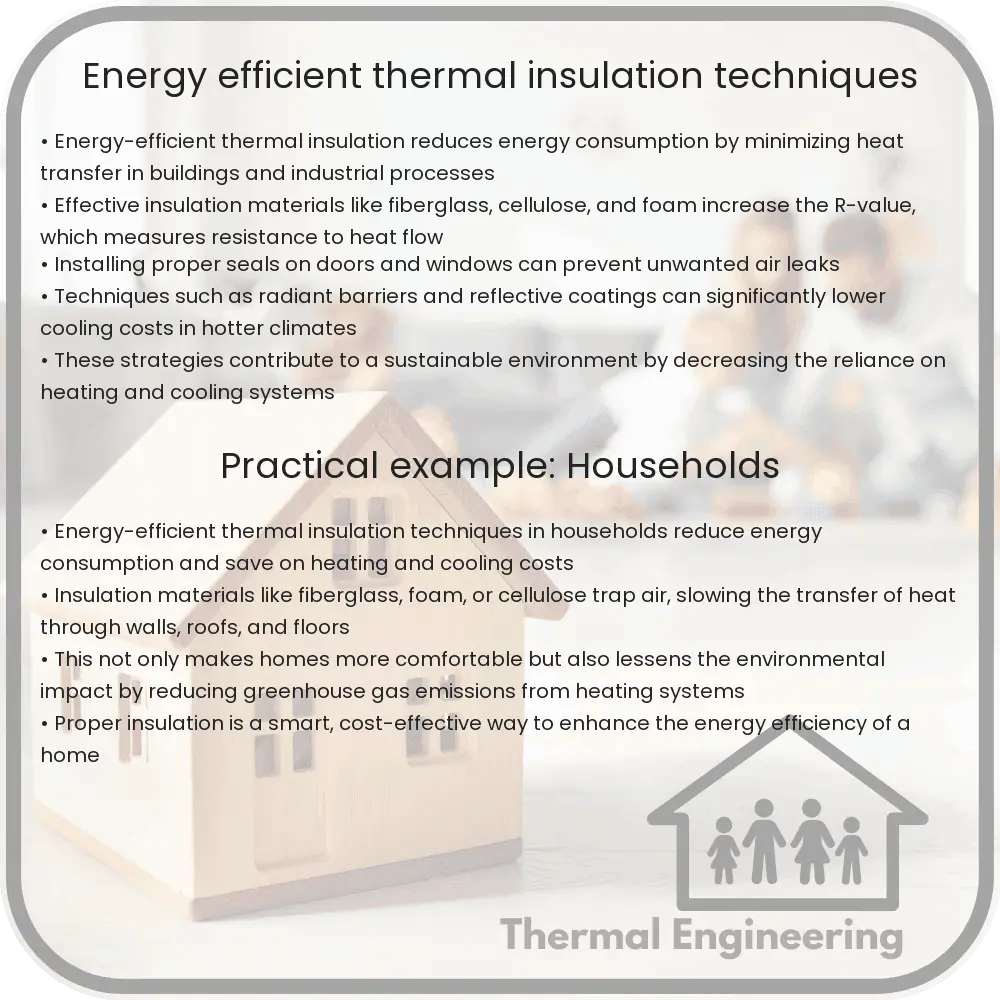Learn about the most effective thermal insulation techniques and materials to enhance building energy efficiency.

Understanding Energy-Efficient Thermal Insulation Techniques
Thermal insulation plays a pivotal role in reducing energy consumption and improving the energy efficiency of buildings. It helps maintain indoor temperatures, thus lessening the load on heating and cooling systems. Effective insulation not only cuts down energy costs but also enhances comfort and reduces greenhouse gas emissions. Let’s explore some of the most efficient thermal insulation techniques and materials used in engineering today.
Types of Insulation Materials
Insulation materials are selected based on properties such as thermal conductivity, density, thickness, and environmental impact. Here are some common types of insulation materials:
- Fiberglass: Composed of finely woven silicon, glass powder, and recycled glass, fiberglass is among the most prevalent insulation materials due to its low cost and effective thermal resistance.
- Cellulose: Made from recycled paper products, primarily newsprint, cellulose is treated with chemicals to make it fire and insect resistant. It has a higher R-value per inch than fiberglass and is considered environmentally friendly.
- Spray Foam: Available in open-cell or closed-cell forms, spray foam expands and hardens upon application, creating a tight thermal barrier. Closed-cell foam has a higher R-value and is more resistant to water vapor than open-cell foam.
- Mineral Wool: Also known as rock wool or slag wool, mineral wool can be made from natural or synthetic materials. It offers superior fire resistance and acoustic properties.
- Polystyrene: This includes both expanded polystyrene (EPS) and extruded polystyrene (XPS), which are rigid and provide good thermal resistance. XPS generally offers a greater insulation R-value.
Key Insulation Techniques
Choosing the right technique for applying insulation is crucial for maximizing its effectiveness. Some of the most commonly applied methods include:
- Batts and Rolls: These are flexible blankets of insulation that are easy to install between framing, such as in walls, floors, and ceilings. They’re best suited for standard spaces without many obstructions.
- Loose-fill and Blown-In: Ideal for irregularly shaped areas and for filling around obstructions. Cellulose or fiberglass are typically used, and the material is blown into place with special pneumatic equipment.
- Foam Board or Rigid Panels: These can be used to insulate almost any part of the home, from the roof down to the foundation. They are particularly effective for exterior wall sheathing and as a thermal barrier on roofs.
- Spray Foam: Applied using a spray container, this method is effective for adding insulation to existing finished areas, around obstructions, or in irregular spaces.
- Reflective or Radiant Barriers: While not traditional insulation, these barriers reflect thermal radiation rather than absorbing it, reducing cooling costs in warm climates.
Improving Energy Efficiency with Proper Installation
Even the best insulation materials can fail to perform optimally if not properly installed. Key points to ensure effective insulation include:
- Air Sealing: Before adding new insulation, seal any air leaks. It’s essential for maximizing efficiency, as insulation is less effective when air is moving through it.
- Correct R-Value: Insulation’s effectiveness is measured in R-values, which indicate an insulation material’s ability to resist heat flow. Higher R-values mean greater insulating power.
- Comprehensive Coverage: Insulation must cover all areas without gaps, compression, or distortions, as these can significantly diminish insulation efficiency.
Energy-efficient thermal insulation is a key factor in building sustainability and reducing environmental impact while promoting significant economic benefits. By understanding and utilizing the right materials and techniques, engineers and builders can greatly enhance building performance and comfort.
Conclusion
Energy-efficient insulation is a crucial aspect of modern engineering, contributing significantly to the overall energy sustainability of buildings. By selecting appropriate materials and employing proper installation techniques, we can achieve optimal insulation performance, reduce energy consumption, and provide long-term environmental and financial benefits.